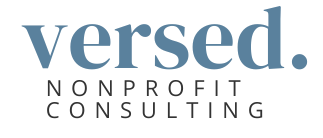Case Study: How I Increased My Client’s Email Open Rate by 64%
Email marketing is one of the most powerful tools for nonprofits to connect with their supporters, but it’s not always easy to stand out in a crowded inbox. Many nonprofits struggle to get their emails opened, let alone read.
That’s why I prioritize personalization in email strategy. By shifting from generic, marketing-heavy messages to authentic, donor-focused communication, I helped one of my clients achieve a 64% increase in email open rates. Here’s how I did it—and how you can too.
1. Using Real Senders
My first change was swapping out the generic organizational sender name for a real person. Instead of seeing “Nonprofit Name” in their inbox, supporters saw messages from someone they recognize and trust, like the Executive Director or a program leader.
Why it works:
This simple shift humanizes your communication, fostering trust and connection. People are more likely to open an email that feels personal rather than promotional.
2. Adopting a Personal and Conversational Tone
Next, I rewrote the email content to feel more like a letter from a friend. Instead of using formal or overly polished language, I embraced a warm, conversational tone.
Why it works:
Donors want to feel like valued members of your community—not just names on a list. A conversational tone builds rapport and makes your communication more engaging.
3. Simplifying Visuals
To make the emails less commercial, I reduced the use of banners, graphics, and heavy design elements. The focus shifted to the written content, making the emails feel like personal messages rather than marketing campaigns.
Why it works:
Overly designed emails can seem like impersonal advertisements. A simple layout keeps the focus on the message, making it feel more genuine.
4. Segmenting the Audience
One-size-fits-all emails don’t resonate with everyone. I implemented audience segmentation based on interests, past behavior, and donation history. Each group received tailored content that directly addressed their motivations and relationship with the organization.
Why it works:
Personalization increases relevance, making supporters feel understood and valued. This leads to higher open rates and deeper engagement.
5. Creating a User-Friendly Call to Action (CTA)
Every email ended with a clear, action-oriented CTA that was easy to follow. Whether donating, reading a story, or registering for an event, I ensured the next step was simple and compelling.
Why it works:
Supporters are more likely to take action when the request is clear and aligns with the tone and purpose of the email.
Why Personalization Matters in Nonprofit Email Marketing
Even the most beautifully designed emails won’t deliver results if they’re not being opened. Today’s donors are savvy—they can spot generic marketing a mile away. Impersonal communication can leave them feeling unimportant and disconnected from your mission.
When your emails feel like authentic, heartfelt messages from real people, they strengthen donor relationships. Supporters feel like an integral part of your nonprofit family, fostering trust and encouraging long-term engagement.
Final Thoughts: Start Personalizing Your Emails Today
Personalized emails aren’t just about better open rates—they’re about building meaningful connections with your supporters. By adopting strategies like:
Using real senders
Writing in a conversational tone
Simplifying visuals
Segmenting your audience
…you can create emails that resonate deeply with your supporters and drive action.
If you’d like help implementing these strategies or managing your email marketing plan, I’d love to connect with you! Book a free discovery call using this link, and let’s make your emails work harder for your mission.
